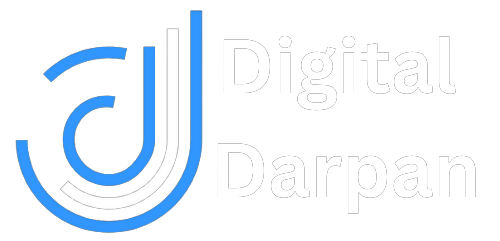Welcome to the world of SEO! Today, we’ll delve into the concept of Semantic SEO, a powerful strategy that prioritizes user intent and in-depth topic exploration.
What is Semantic SEO?

Imagine a search engine that understands not just words, but the meaning behind them. That’s the core principle of Semantic SEO. It’s about crafting content that revolves around a topic, rather than obsessing over a single keyword.
Why is Semantic SEO Important?
Think about yourself searching for “best running shoes.” In the past, SEO focused on ranking pages crammed with “running shoes” keywords. But semantic SEO goes deeper. It considers your intent: Are you a beginner, a marathoner, or looking for stylish options?
By understanding these nuances, search engines can deliver more relevant results. For you, this means finding the perfect running shoe content, not a generic list. Semantic SEO benefits everyone – you get a better search experience, and websites offering valuable content are rewarded with higher rankings.
Read- Why Hiring a Digital Marketing Agency is Essential
Benefits of Semantic SEO
- Enhanced User Experience: Content that anticipates user needs leads to satisfied visitors who stay longer and engage more.
- Boosted Authority: In-depth content establishes you as a thought leader, attracting backlinks and building your website’s credibility.
- Future-Proof SEO: Search engines are constantly evolving, and semantic SEO adapts to these changes by focusing on user intent, a constant factor.
- Targeting Long-Tail Keywords: These more specific searches have lower competition, allowing you to reach a targeted audience.
How to Implement Semantic SEO
Now that you understand the power of Semantic SEO, let’s get tactical. Here are practical steps to implement it on your website:
1. Keyword Research with a Twist:
While keywords remain important, semantic SEO prioritizes understanding the search intent behind them. Here’s how:
- Utilize Keyword Research Tools: Leverage tools like Google Keyword Planner or SEMrush to identify relevant keywords and search volumes.
- Embrace Long-Tail Keywords: Target specific searches related to your topic. For example, instead of just “running shoes,” consider “best running shoes for women with wide feet.”
- Analyze User Behavior: Tools like Google Search Console reveal user queries that land on your pages. This helps you understand what users are looking for and tailor your content accordingly.
2. Craft Compelling Content:
Semantic SEO thrives on well-structured, informative content:
- Target a Topic, Not Just Keywords: Instead of keyword stuffing, create content that comprehensively explores a topic and its subtopics.
- Incorporate LSI Keywords: Latent Semantic Indexing (LSI) keywords are synonyms and related terms that enrich your content and help search engines grasp the broader topic.
- Structure Your Content: Headings, subheadings, and bullet points make your content scannable and improve user experience.
3. Optimize On-Page Elements:
Strategic use of on-page elements strengthens your semantic SEO efforts:
- Meta Descriptions and Titles: Craft compelling descriptions and titles that accurately reflect your content’s topic and entice users to click.
- Image Optimization: Include relevant keywords in image alt tags to improve search visibility.
- Internal Linking: Link to other relevant pages on your website to create a strong information architecture and improve user engagement.
4. Build Your Expertise (E-A-T):
Google considers Expertise, Authoritativeness, and Trustworthiness (E-A-T) when ranking websites. Here’s how to build yours:
- Create High-Quality Content: Focus on providing valuable, informative content that establishes your expertise.
- Showcase Author Credentials: Highlight the qualifications and experience of your content creators.
- Earn Backlinks from Reputable Sites: Backlinks from trusted websites signal to search engines that your content is valuable.
By following these steps, you can create a foundation for successful semantic SEO implementation. Remember, SEO is an ongoing process. Stay informed about the latest trends, keep creating valuable content, and watch your website climb the search engine ladder!
Understanding Semantic SEO With Example
Let’s imagine you run a website that specializes in booking homestays in Udaipur, Rajasthan. Here’s how you can implement Semantic SEO:
Traditional SEO Approach:
- Keywords: “Udaipur hotels,” “budget hotels Udaipur”
This approach focuses on generic keywords with high competition. It might lead to traffic, but not necessarily from your target audience (tourists seeking a unique homestay experience).
Semantic SEO Approach:
- Target Topic: Unique homestays in Udaipur
- Long-Tail Keywords: “best homestays in Udaipur near Lake Pichola,” “heritage homestays Udaipur with cooking classes,” “pet-friendly homestays Udaipur old city”
By targeting specific topics and long-tail keywords, you attract users with a clear intent to book a homestay in Udaipur.
Content Creation:
- Blog post: “Top 5 Unique Homestays in Udaipur for an Authentic Experience” (incorporating LSI keywords like “Rajasthani hospitality,” and “cultural immersion”)
- Landing page: “Pet-Friendly Homestays in Udaipur: The Perfect Getaway for You and Your Furry Friend” (including relevant meta descriptions and image alt tags)
Additional Tips:
- Partner with local homestay owners to create informative content showcasing the unique offerings of their properties.
- Earn backlinks from travel blogs or websites focused on homestays in India.
- Optimize your website for mobile users, as many travelers research and book accommodations on their smartphones.
By implementing Semantic SEO, you can attract qualified leads (tourists specifically looking for homestays) and establish your website as a valuable resource for booking unique accommodations in Udaipur.
Conclusion
Semantic SEO represents a shift in SEO philosophy, prioritizing user intent and in-depth content over keyword obsession. By implementing the strategies outlined here, you can create a website that not only ranks higher in search results but also resonates with your target audience.







